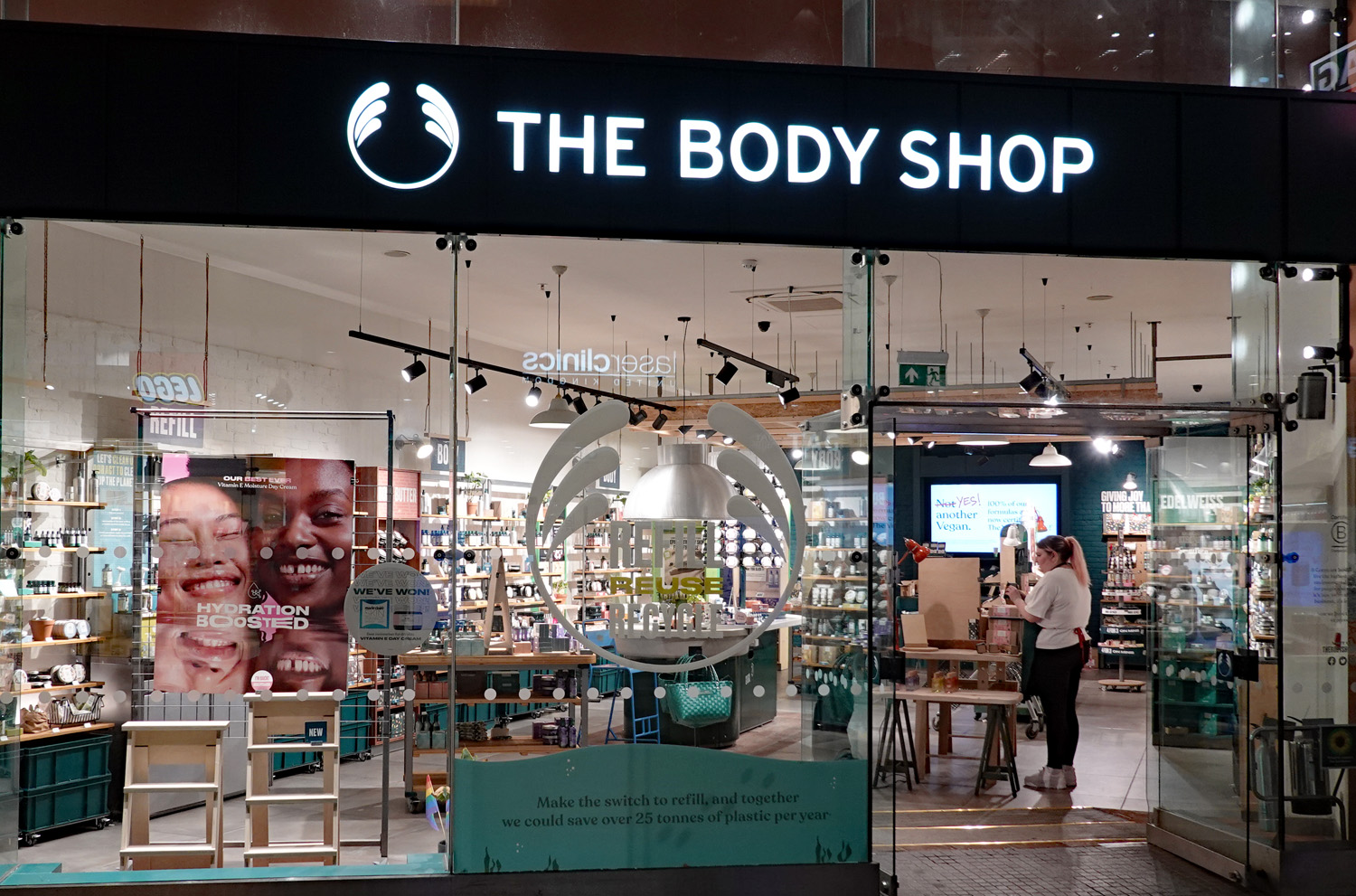 On 12 February, it was announced that The Body Shop UK was entering administration. With 199 shops across the country, if this leads to the collapse of the business, some 2000 jobs will be lost. The business has been struggling since 2020 and poor sales this last Christmas led the new owners, the pan-European alternative investment firm, Aurelius, to appoint administrators.
On 12 February, it was announced that The Body Shop UK was entering administration. With 199 shops across the country, if this leads to the collapse of the business, some 2000 jobs will be lost. The business has been struggling since 2020 and poor sales this last Christmas led the new owners, the pan-European alternative investment firm, Aurelius, to appoint administrators.
This could potentially begin an insolvency process that could result in the closure of some or all of the shops. This would spell the end of an iconic brand that, since its founding in 1976, has been associated with natural, ethically sourced and environmentally friendly products. Aurelius has already sold The Body Shop business in most of mainland Europe and in parts of Asia to an unnamed buyer. It is unclear what will happen to the approximately 2800 stores and 8000 employees in 70 countries outside the UK.
Origins of The Body Shop1
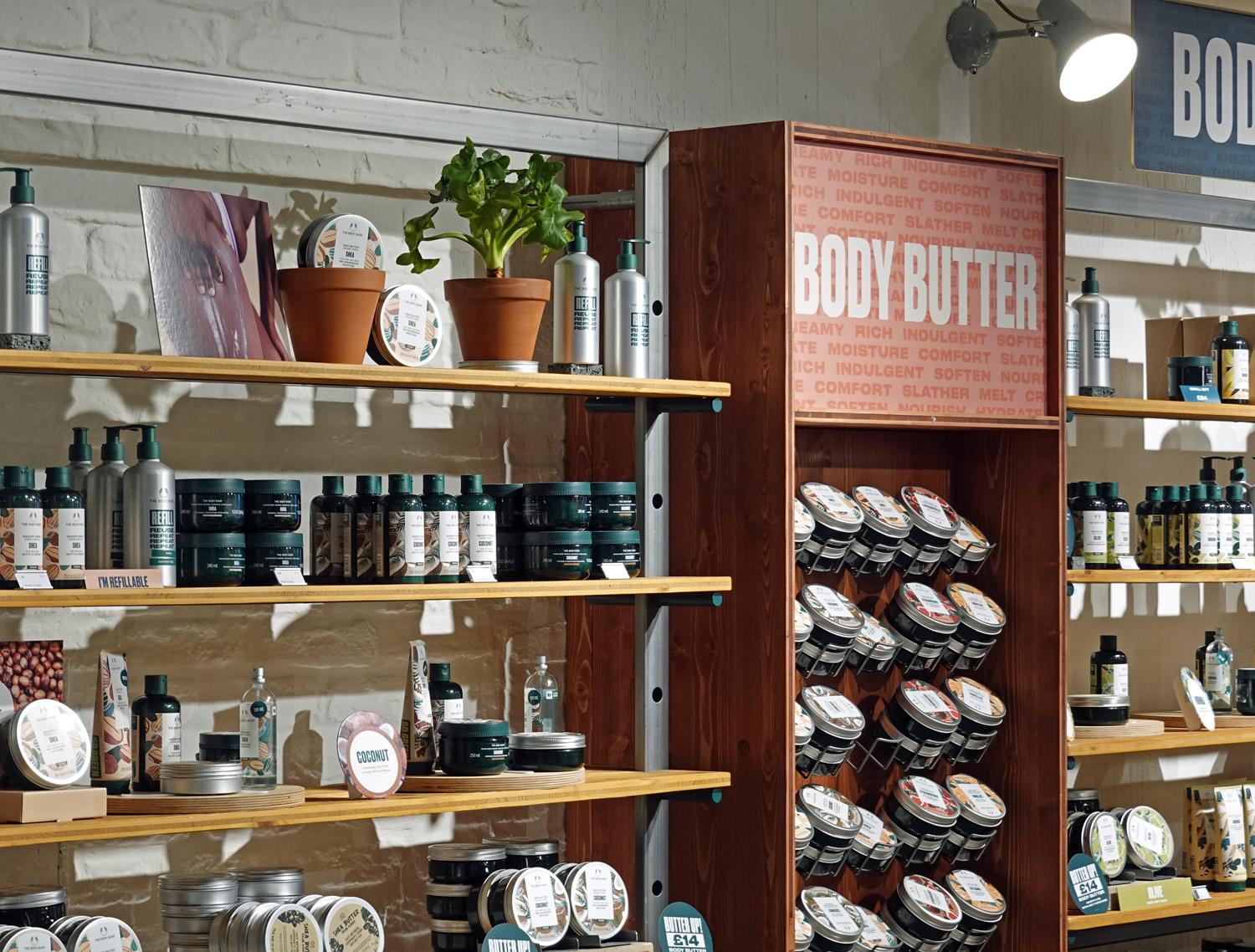 The Body Shop was founded in 1976 and shot to fame in the 1980s. It stood for environmental awareness and an ethical approach to business. But its success had as much to do with what it sold as what it stood for. It sold natural cosmetics – Raspberry Ripple Bathing Bubbles and Camomile Shampoo – products that proved immensely popular with consumers.
The Body Shop was founded in 1976 and shot to fame in the 1980s. It stood for environmental awareness and an ethical approach to business. But its success had as much to do with what it sold as what it stood for. It sold natural cosmetics – Raspberry Ripple Bathing Bubbles and Camomile Shampoo – products that proved immensely popular with consumers.
Its profits increased from a little over £1m in 1985 (€1.7m) to approximately £65m (€77.5m) in 2012. Although profits then slipped, falling to €65.3m in 2014 and €54.8m in 2015, its profit growth in new markets over that same period was 12.4%.
Sales revenue, meanwhile, grew even more dramatically, from £4.9m in 1985 to approximately €967.2m in 2015. By 2015, Body Shop International had over 3100 stores, operating in 61 countries.
What made this success so remarkable is that The Body Shop did virtually no advertising. Its promotion stemmed largely from the activities and environmental campaigning of its founder, Anita Roddick, and the company’s uncompromising claim that it sold only ‘green’ products and conducted its business operations with high ethical standards. It actively supported green causes such as saving whales and protecting rainforests, and it refused to allow its products to be tested on animals. Perhaps most surprising in the world of big business at the time was its high-profile initiative ‘trade not aid’, whereby it claimed to pay ‘fair’ prices for its ingredients, especially those supplied by people in developing countries who were open to exploitation by large companies.
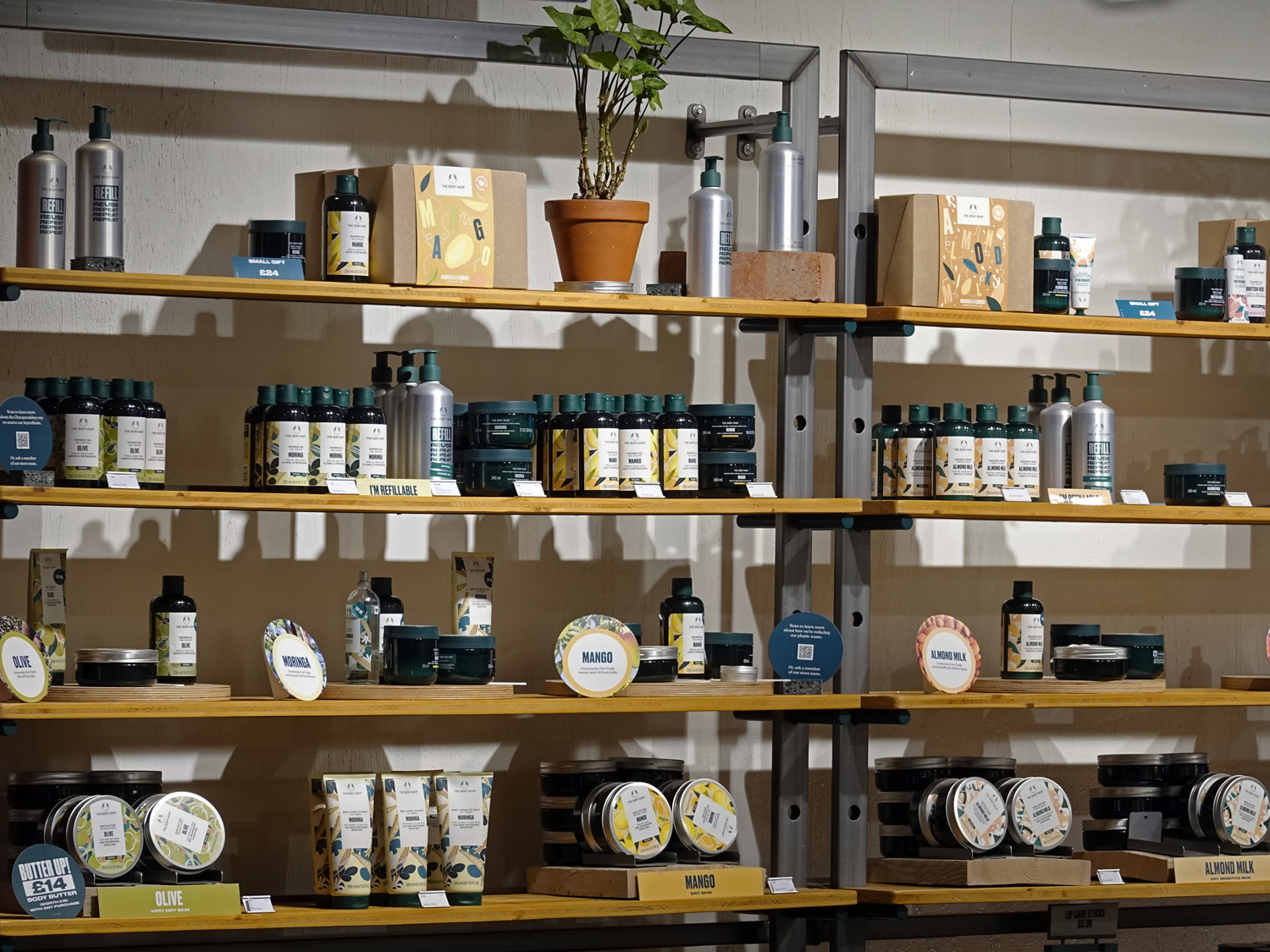 The growth strategy of The Body Shop focused upon developing a distinctive and highly innovative product range, and at the same time identifying these products with major social issues of the day, such as the environment and animal rights.
The growth strategy of The Body Shop focused upon developing a distinctive and highly innovative product range, and at the same time identifying these products with major social issues of the day, such as the environment and animal rights.
Its initial expansion was based on a process of franchising, where individuals opened Body Shops which were then supplied by the company with its range of just 19 products. Then, in 1984 the company went public. Following its flotation, the share price rose from just 5p to a high of 370p in 1992.
In the 1990s, however, sales growth was less rapid. By 1998, earnings had collapsed by 90% and the share price fell to 117p. Shareholders forced Anita Roddick to step down as Chief Executive, but for a while she and her husband remained as co-chairs. In 2002, they stepped down as co-chairs, by which time profits had fallen to £20.4m. In 2003 she was awarded in knighthood and became Dame Anita Roddick. Sales then grew rapidly from 2004 to 2006 from €553m to €709m.
Acquisition of The Body Shop by L’Oréal
A dramatic event, however, occurred in 2006 when The Body Shop was sold to the French cosmetics giant, L’Oréal, which was 26% owned by Nestlé, The event resulted in the magazine Ethical Consumer downgrading The Body Shop’s ethical rating from 11 out of 20 to a mere 2.5 and calling for a boycott of the company. Three weeks after the sale, the daily BrandIndex recorded an 11 point drop in The Body Shop’s consumer satisfaction rating from 25 to 14.
There were several reasons for this. L’Oréal’s animal-testing policies conflicted with those of The Body Shop and L’Oréal was accused of being involved in price-fixing with other French perfume houses. L’Oréal’s part-owner, Nestlé, was also subject to various criticisms for ethical misconduct, including promoting formula milk rather than breast milk to mothers with babies in developing countries and using slave labour in cocoa farms in West Africa.
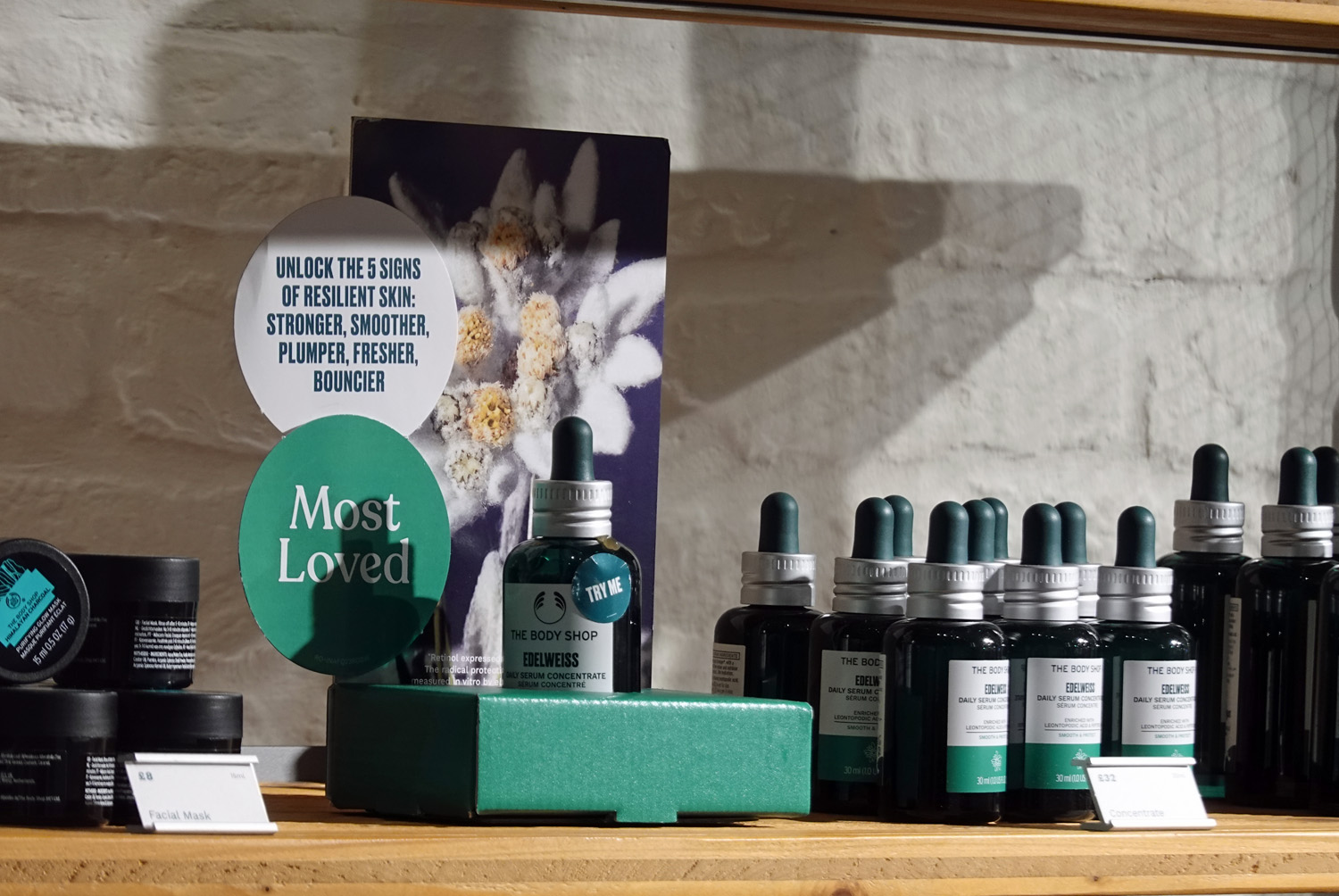 Anita Roddick, however, believed that, by taking over The Body Shop, L’Oréal would develop a more ethical approach to business. Indeed, it did publicly recognise that it needed to develop its ethical and environmental policies.
Anita Roddick, however, believed that, by taking over The Body Shop, L’Oréal would develop a more ethical approach to business. Indeed, it did publicly recognise that it needed to develop its ethical and environmental policies.
L’Oréal adopted a new Code of Business Ethics in 2007 and gained some external accreditation for its approach to sustainability and ethics. It was ranked as one of the world’s 100 most ethical companies by Ethisphere in 2007 and, in 2016, it was again part of this list for the seventh time.
L’Oréal set itself three targets as part of its environmental strategy (2005–15), including a 50% reduction in greenhouse gas emissions, water consumption and waste per finished product unit. It made a donation of $1.2m to the US Environment Protection Agency to help bring an end to animal testing and, in March 2013, it announced a ‘total ban on the sale in Europe of any cosmetic product that was tested on animals or containing an ingredient that was tested on animals after this date.’ It also promised that ‘By 2020, we will innovate so that 100% of products have an environmental or social benefit.’
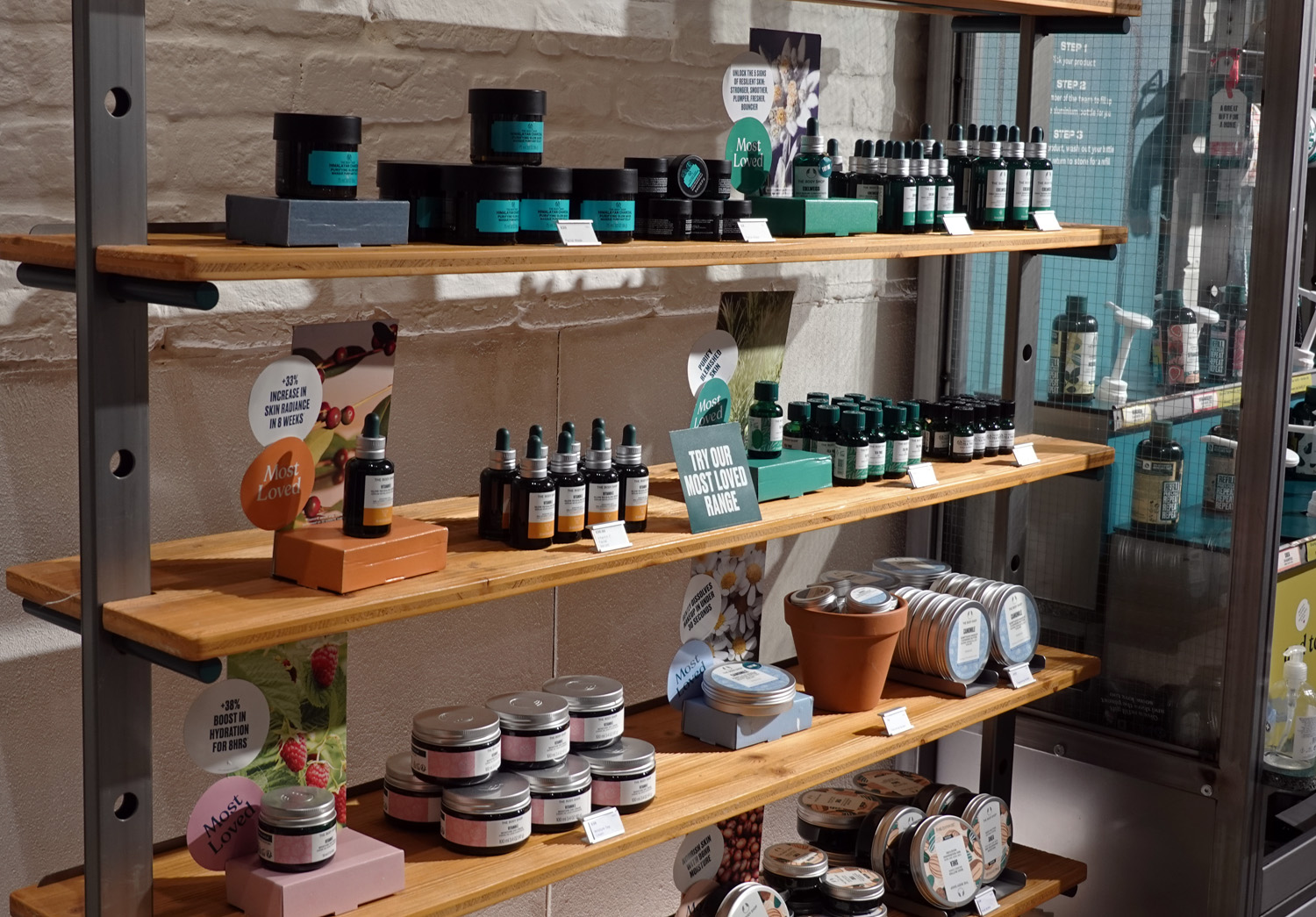 Sadly, Anita Roddick died in 2007 and so was not able to witness these changes.
Sadly, Anita Roddick died in 2007 and so was not able to witness these changes.
L’Oréal also looked to inject greater finance into the company aimed at improving the marketing of products. In autumn 2006 a transactional website was launched and there have been larger press marketing campaigns. Profits continued to rise in 2006 and 2007, but fell back quite dramatically from €64m in 2007 to €36m in 2008 as recession hit the high streets. They fell by a further 8% in 2009, but significant growth was seen in the following three years: 2010, up 20.3% to €65.3m; 2011, up 4.3% to €68.1m; 2012, up 13.8% to €77.5m.
From L’Oréal to Natura to Aurelius to ?
 From 2013, the financial performance of The Body Shop deteriorated. Profits fell by 38% in 2016 to just €34m, with sales falling by 5%. In June 2017, L’Oréal announced that it had agreed to sell The Body Shop for €1bn (£877m) to Natura Cosmeticos, the largest Brazilian cosmetics business. Natura was awarded ‘B Corp’ status in 2014 as it met certain standards for environmental performance, accountability and transparency. In 2019, The Body Shop was separately certified as a B Corp.
From 2013, the financial performance of The Body Shop deteriorated. Profits fell by 38% in 2016 to just €34m, with sales falling by 5%. In June 2017, L’Oréal announced that it had agreed to sell The Body Shop for €1bn (£877m) to Natura Cosmeticos, the largest Brazilian cosmetics business. Natura was awarded ‘B Corp’ status in 2014 as it met certain standards for environmental performance, accountability and transparency. In 2019, The Body Shop was separately certified as a B Corp.
Initial indications for The Body Shop under its new owners seemed good, with net revenue rising by 36% in 2018 and 6.3% in 2019. 2020 saw strong growth in sales, with a rise in online sales more than offsetting the effect of store closures during the pandemic. Its market share peaked in 2020 at 1.4%. However, with the cost-of-living crisis following the pandemic and the Russian invasion of Ukraine, many consumers switched to cheaper brands and cheaper outlets, such as Boots and Superdrug, sacrificing environmental and ethical concerns in favour of value for money. As a result, The Body Shop’s market share fell, dropping to 0.8% in 2022 and not picking up in 2023.
This prompted Natura to sell the business to Aurelius. Aurelius hoped to revitalise The Body Shop by promoting its core values and through partnerships or concessions with major retailers, such as John Lewis or Next. However, as we saw above, after a poor Christmas and a weaker capital base and higher cost commitments than initially thought by Aurelius, the new owner filed to put The Body Shop into administration.
What will come of the administration process remains to be seen. Perhaps some of the more profitable stores will be saved; perhaps there will be an expansion of the online business; perhaps partnerships will be sought with major retailers. We shall see.
1 Some of this section is based on Case Study 9.3 from Economics (11th edition).
Videos
 The Body Shop begins filing for administration
The Body Shop begins filing for administration Hundreds of jobs at risk as The Body Shop goes into administration
Hundreds of jobs at risk as The Body Shop goes into administration The body shop’s UK business in peril
The body shop’s UK business in peril The Body Shop UK Enters Administration
The Body Shop UK Enters Administration
ITV News, Rachel Younger (12/2/24)
ITV News, Joel Hills (13/2/24)
WION World Business Watch on YouTube (13/2/24)
YouTube, Teresa Mulhern (12/2/24)
Articles
- Aurelius Acquires Iconic Global Beauty Brand and Retailer, The Body Shop
- Back to the future? What’s next for the Body Shop brand
- The Body Shop appoints administrators for UK business
- The Body Shop set to appoint administrators for UK arm
- The Body Shop collapses into administration in UK
- The Body Shop UK in administration – what went wrong?
- Body Shop UK jobs and stores at risk in race to save firm
- From cult status to closure fears — what happened to The Body Shop?
- Headed for administration, why did The Body Shop fail?
- Comment: The Body Shop’s woes hit just as it should be at its most relevant
- The collapse of The Body Shop shows that ‘ethical’ branding is not a free pass to commercial success
Aurelius news (14/11/23)
Marketing Week, Niamh Carroll (14/11/23)
Financial Times, Laura Onita and Will Louch (13/2/24)
Financial Times, Laura Onita (10/2/24)
The Guardian, Sarah Butler and Rob Davies (13/2/24)
Sky News, James Sillars (13/2/24)
BBC News (13/2/24)
CBC News, Natalie Stechyson (12/2/24)
Startups, Richard Parris (12/2/24)
TheIndustry.beauty, Lauretta Roberts (13/2/24)
The Conversation, Kokho Jason Sit (15/2/24)
Questions
- What assumptions did The Body Shop made about the ‘rational consumer’?
- How would you describe the aims of The Body Shop (a) in the early days under Anita Roddick; (b) under L’Oréal; (c) under Aurelius?
- How has The Body Shop’s economic performance been affected by its attitudes towards ethical issues?
- What has Lush done right that The Body Shop has not?
- What will the administrators seek to do?
- Find out what has happened to The Body Shop outlets in mainland Europe?